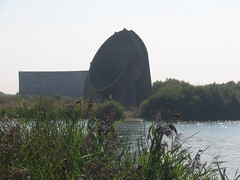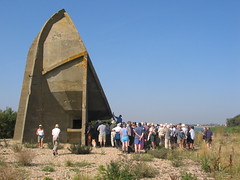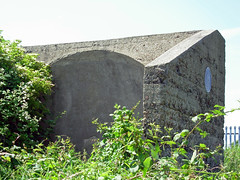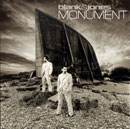
Probably not, concludes Brett Holman in a posting on his Airminded blog entitled The widening margin. It is an interesting analysis by someone doing a PhD at the University of Melbourne, examining the impact of airpower propaganda on the British people between 1908 and 1939
. The whole site looks worth a poke around.
Lastly, here’s a counterfactual which I’ve long wondered about. Between 1933 and 1935, the Air Ministry put a fair amount of effort into researching the feasibility of using acoustic mirrors as a comprehensive early warning system. The acoustic mirrors were, mostly, concrete hemispheric dishes for focusing sound, which had been used as early as 1916. The biggest ones, at Dungeness in Kent and Maghtab in Malta, were 200 feet long curved walls. Land was actually purchased along the Thames Estuary for the beginnings of a national acoustic mirror system, but work never started because radar came along. But if it hadn’t, then in 1940 Fighter Command might have relied upon a network of these acoustic mirrors all along the coast. How useful would they have been?
The experimental mirrors had a maximum detection range of 22 miles (on very windy days it was a lot less). I’ll be generous and call it 25 miles, which is then added to the 50 miles from the coast to London for a total distance of 75 miles. The Thames Estuary acoustic mirrors probably would have come online in 1936, and so again I’ll be generous, and assume that London at least would have a working early warning system from that year.
Taking all this into account, the results can be seen above [article has a graphic]. And sadly the acoustic mirrors wouldn’t have made much difference — a margin of only about 10 minutes, not much improved on the 5 minutes with no warning system. Of course, even a few minutes’ extra warning was worth having, but the Air Ministry was right to terminate development of the acoustic mirror network in order to concentrate on the far more promising radar.
Read Holman’s full article (and some warnings about the assumptions made).






 German musicians
German musicians 

